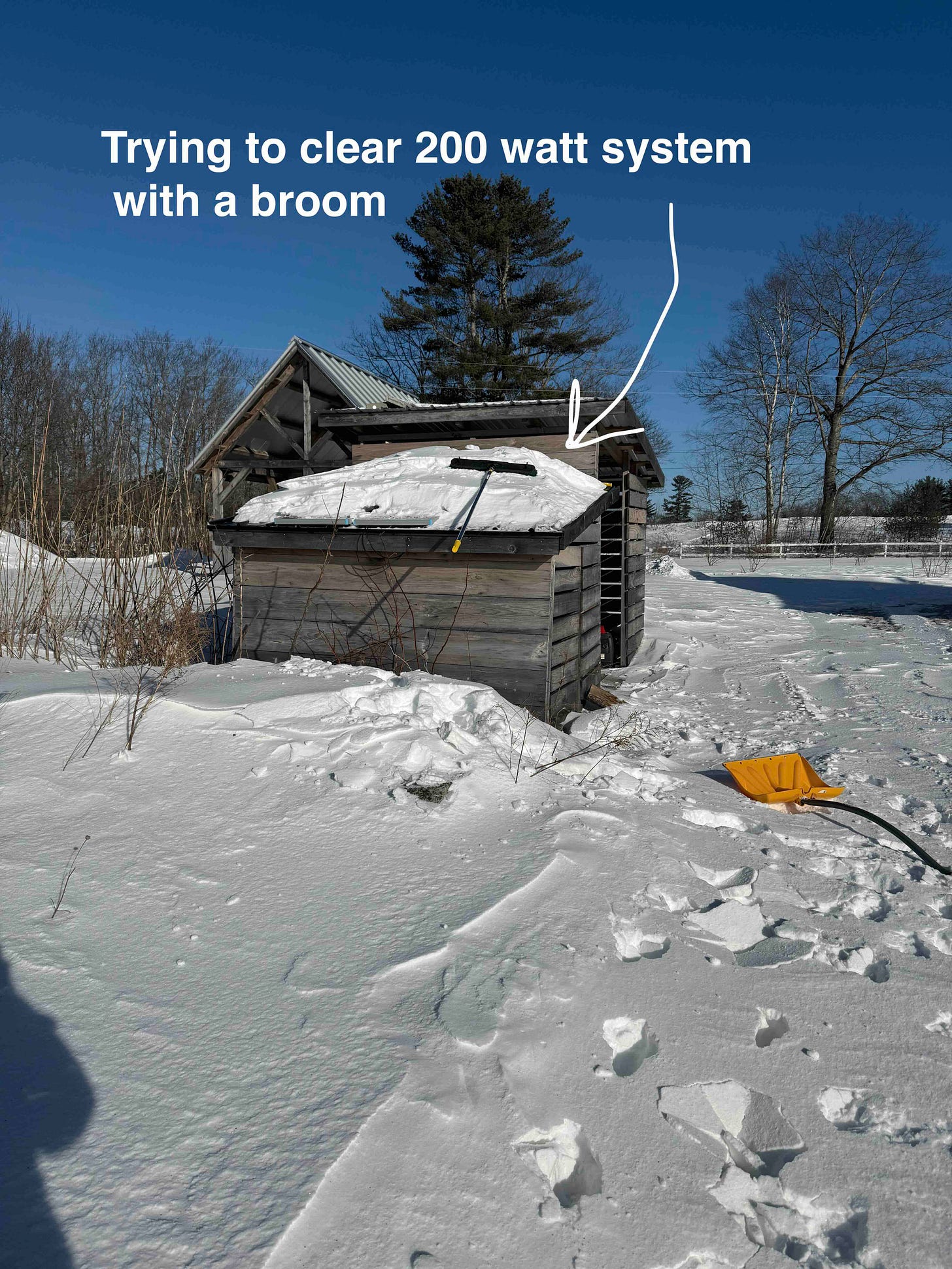Laws that give you whiplash.
Aiming to highlight the real complexity that NEB has brought to the state
I want to mention the local business owners who provided compelling testimony as solar developers who are committed to the state, run small businesses, and have employees. This isn’t all of them, it’s just some that I heard.
From Sundog Solar:
From Perennial Renewables, who used the phrase “whiplash” in testimony to describe the frenzy of legislative activity in the past years since the OPA highlighted the problem.
(Testimonies in full can be downloaded here -click on Energy, Utilities, Technology and then 2-27-2025. )
In my opinion, the legislature created a *highly* predictable quagmire by incentivizing the development of some businesses through legislating that electric costs can go up significantly. (NEB legislation appears to have spread a 14% cost to all consumers of electricity in order to incentive the industry.)
It’s a bad legislative plan to force a zero sum game between wood chip mills, potato processing plants, and blueberry farmers, who are paying enormous electric bills, and small local solar developers, who are receiving the benefit of those enormous electric bills.
The OPA currently estimates Net Energy Billing (NEB) will cost the state $240 million per year.
But, to undo the legislation feels unfair to the local solar developers. I’ve been involved in small business all my life, and have empathy. And to maintain the legislation is unfair to everyone who doesn’t have an NEB arrangement (i.e. most of the ratepayers.)
Most homeowners do not realize that their rooftop solar is an economic subsidy to them that their neighbors without solar are literally paying for every month.
I helped my mom choose a rooftop system and battery setup. I’m not criticizing those who have decided to participate in the NEB, because it’s basically the only way to get a grid-tied backup system.
Personally, and I know my mother would agree: the only fair thing to do is charge the home solar grid-tied systems their pro-rata share of the transmission & distribution costs. Because they still use that system all night and significant portions of the winter.
(If you are wondering why people don’t go fully off-grid: The average house would require a system install that runs well over $80k, and they would absolutely need a means to clear snow from roofs in the winter as soon as the sun came out.)
NEB provides a subsidy to people who can afford the ±$20k startup costs, because they are excused from paying a pro-rata portion of maintaining the transmission and distribution network. That needs to be fixed. Because of the stranded costs statutes, the owner of a solar rooftop system has effectively socialized their portion of the T&D onto the entire ratepayer group, other than those with rooftop solar.
Community Solar arrangements appear even stranger: a friend with a community solar subscription still pays pro-rata T&D charge [i.e., the charge on the bill labeled Delivery]. But, it appears that the Community Solar developer holds onto that money - but is not responsible for maintaining the T&D network! It’s a situation that is overtly, obviously NOT SCALEABLE. If everyone subscribed to community solar, community solar developers would maintain ALL the T&D costs, and CMP and Versant would be allowed to charge the exact same amount in Stranded Costs.
Next post I’ll discuss the testimony from LD 359 (4:00pm), where environmental groups state that people with solar on their roofs SHOULD be excused from paying a pro-rata portion of maintaining T&D.
Please, let me know if you can think of a fairer solution than the one described above. I’m interested.





Empathy is understood, sympathy I don't have for these solar developers. They're all out to feather their own nests with taxpayer and ratepayer money. The real fault lies with the initial legislation that promoted NEB. Many of our politicians have no clue about how the grid functions and are so engrossed with being politically correct that they'll do anything to promote renewables, even if it means most Mainers have to pay more, a lot more, for their electricity. If solar and wind can't stand on their own without massive taxpayer subsidies, it's time to go with hydro from Canada, which is 24/7 dispatchable to the grid. When the sun don't shine and the wind don't blow...the world goes dark. That's why sun and wind are known as the "unreliables". And no, snow covered panels don't produce any electricity.